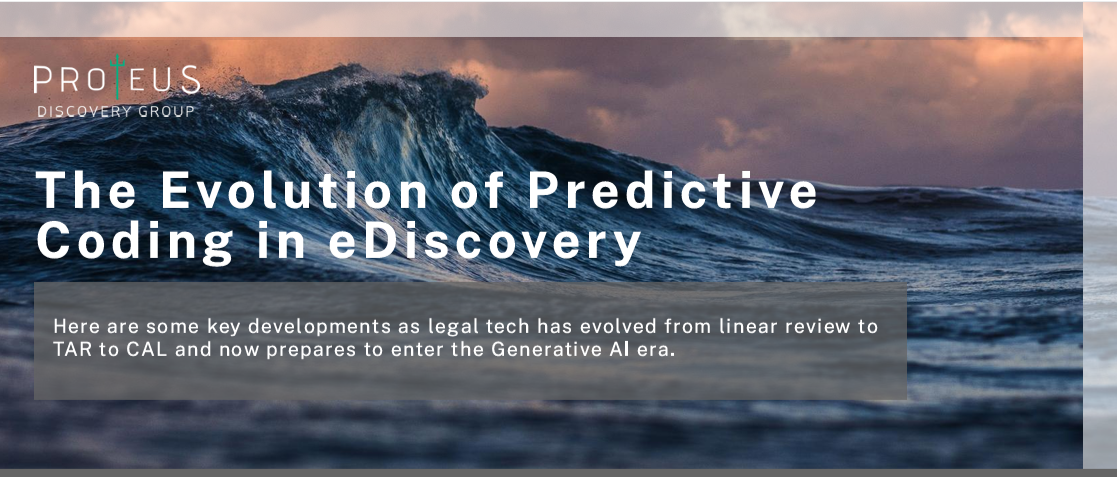As legal technology has evolved from linear review to TAR to CAL to Generative AI, we've seen many other key developments. Starting in the “old days” of eDiscovery – a.k.a. 2006 – with TAR 1.0, attorneys once had to rely solely on a subject matter expert (SME) who would code a seed set of documents that ranged anywhere from 1,000 to 5,000, depending on the consistency of choices the SME made during the review.
That’s right, one person made all the choices and the chips would fall where they may.
TAR 2.0 in the mid-2010s brought on Continuous Active Learning (CAL). This eliminated the need for a seed set because CAL would continually adjust its predictions as documents were coded. This is still in use today and truly paved the way for the world of Generative AI that we’re in today. Software providers like Relativity, Everlaw, and others have beta-launched programs with their Generative AI features.
As always, technology will continue to advance. Legal teams and legal technology enthusiasts are eager to see what will come next. Will Generative AI get its own “Da Silva Moore” moment? Either way, lawyers must find defensible ways to use new technology as it arises.
If you’d like to see the full timeline, you can get a look back at the changes our legal industry has seen as we fully enter the age of AI. Download this infographic, "The Evolution of Predictive Coding in eDiscovery". It’s a solid brush up on where we’ve been, so we can see more clearly where we’re going.
If you still want more, you can check out our "Section for the Skeptics". It addresses the top 4 concerns legal teams have about CAL and Generative AI in document review. Or download a full copy of our AI in Document Review eBook.



